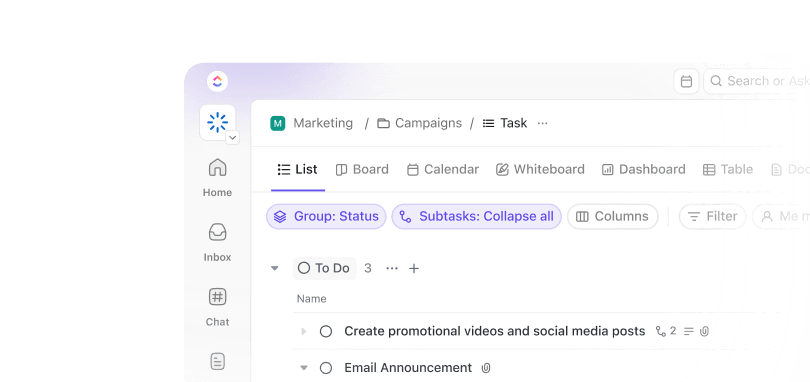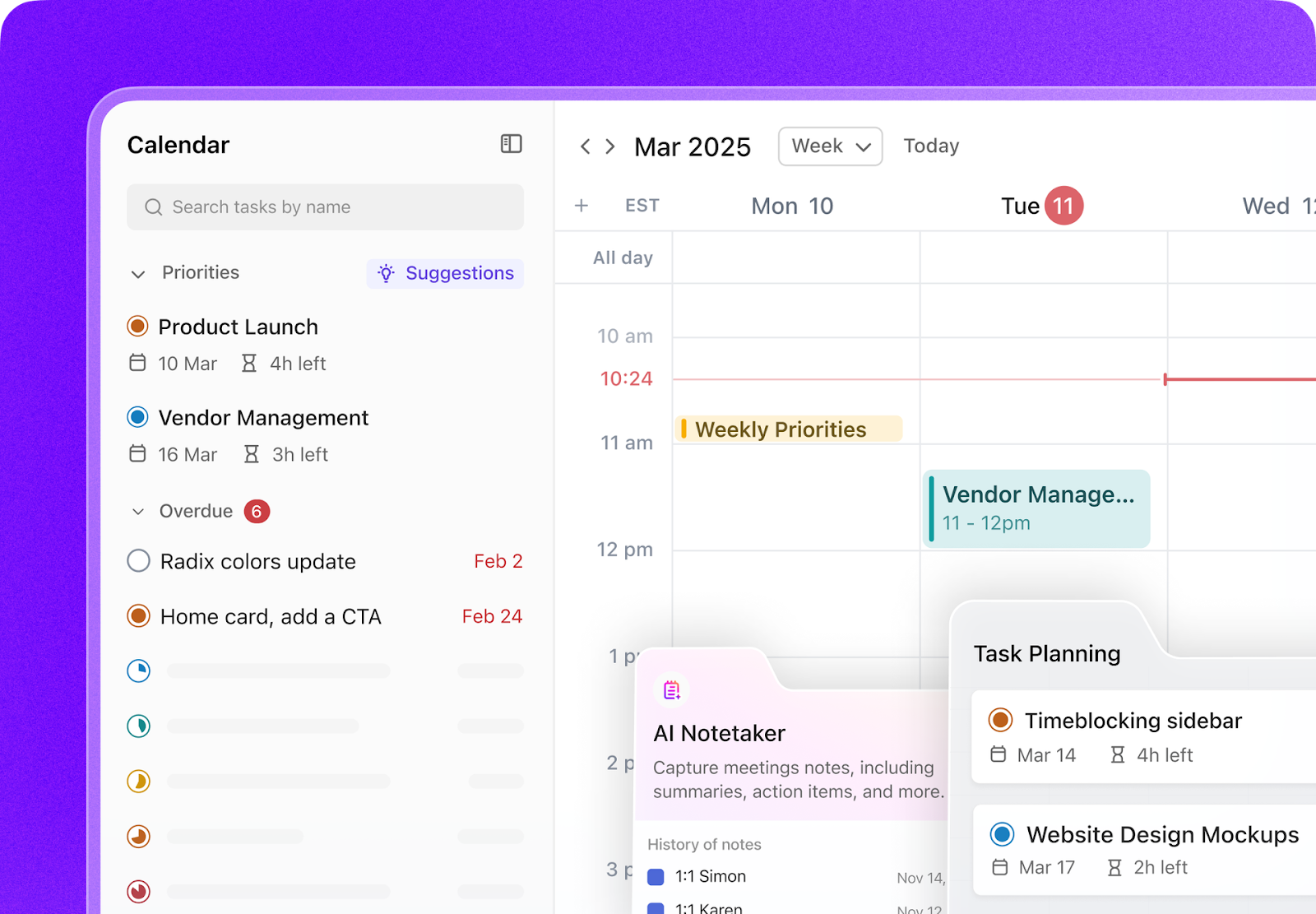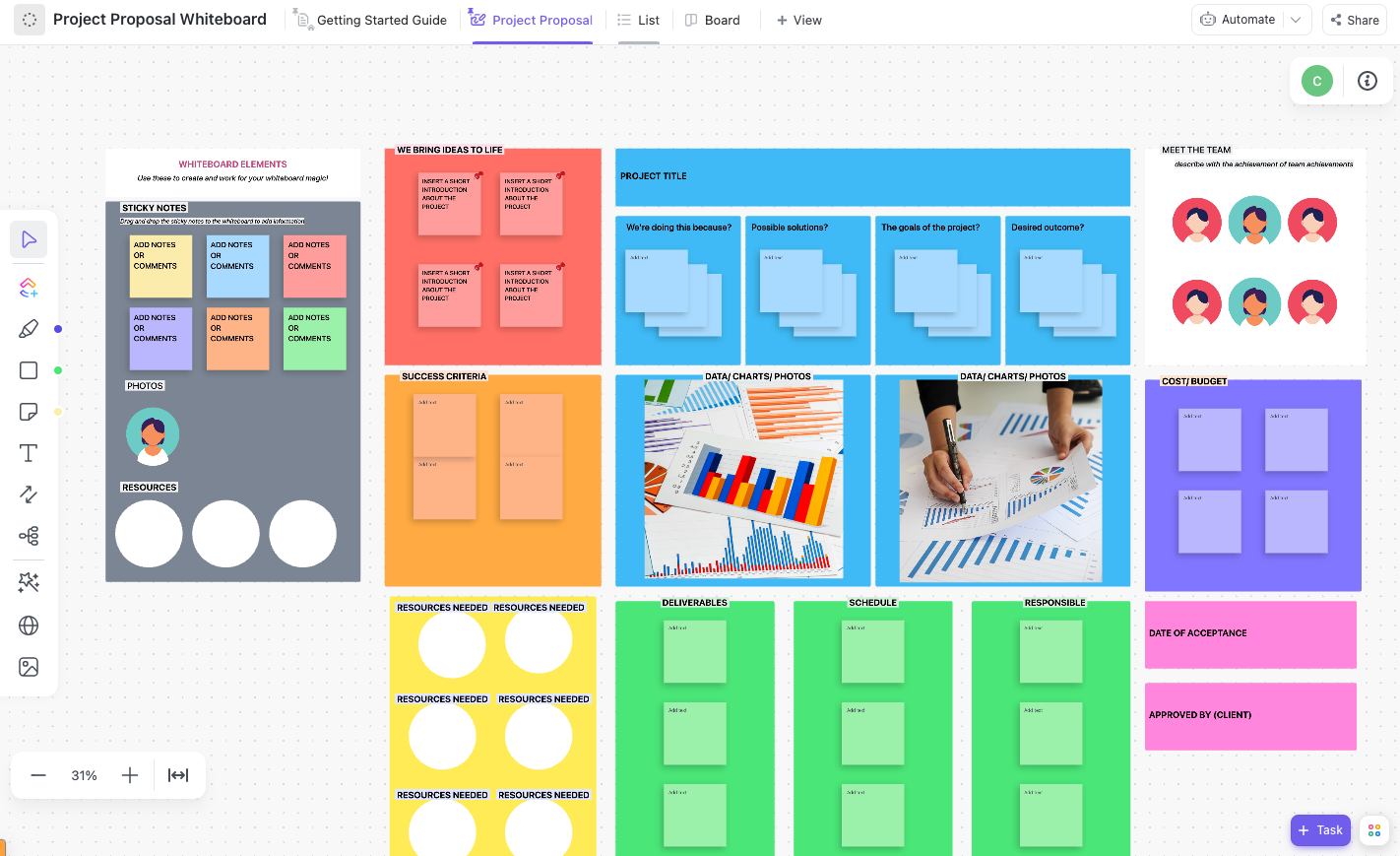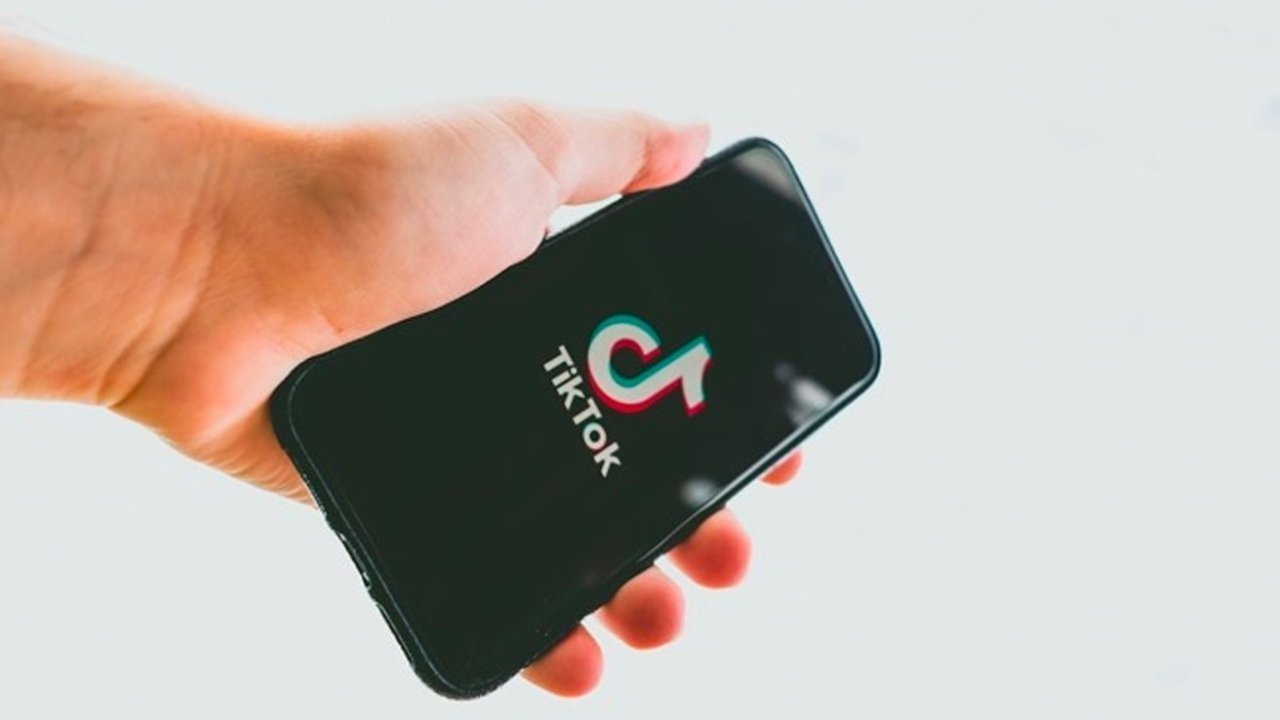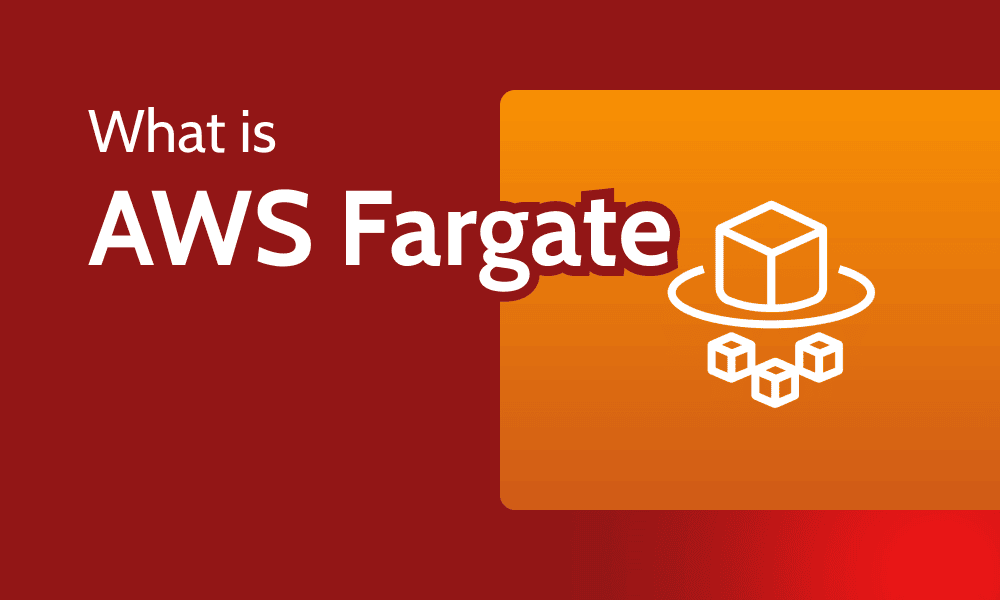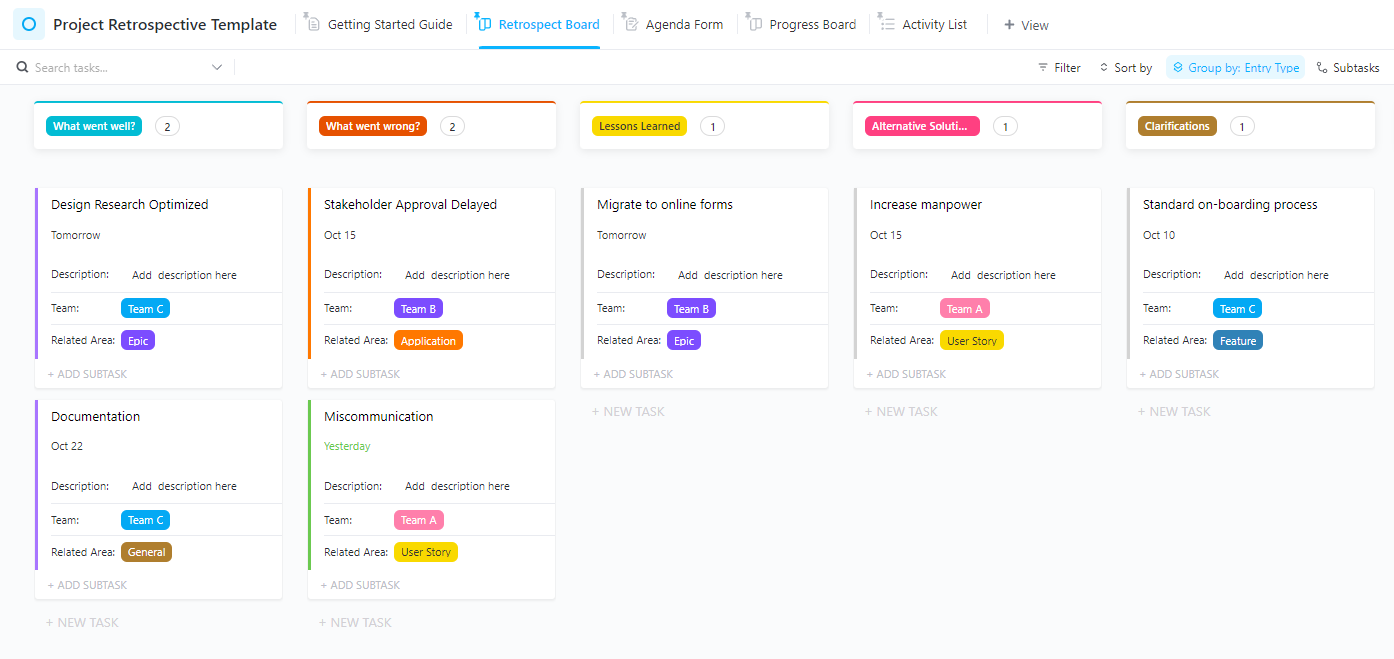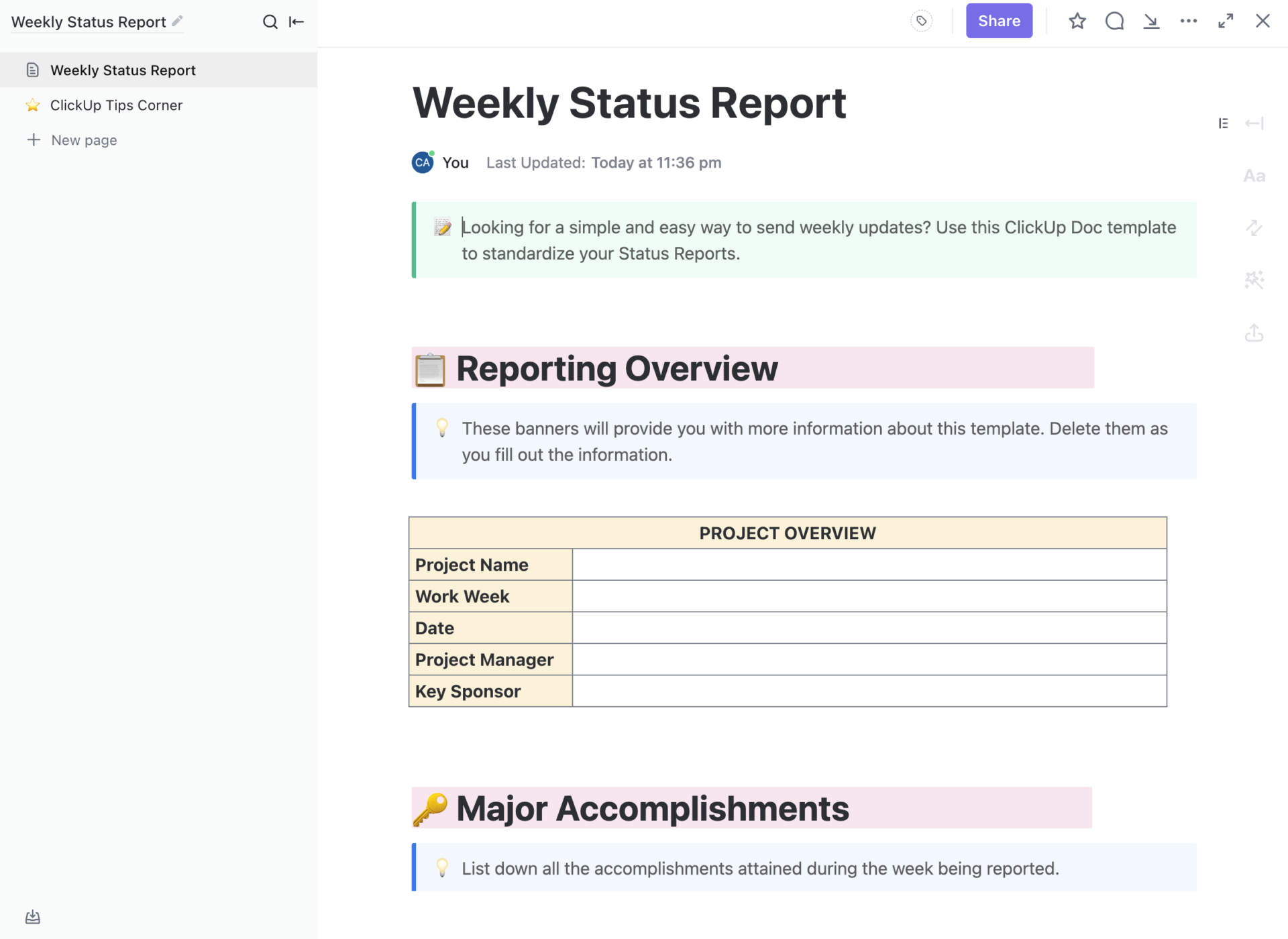Public relations moves fast. One moment, you’re pitching a planned product launch; the next, you’re rushing to respond to a breaking story.
However, if you’re still relying on scattered docs and last-minute planning, you’re missing key dates and media opportunities that should’ve been scheduled weeks ago.
That’s where a PR calendar helps.
Product launches, funding news, awareness days, seasonal campaigns, customer wins—they all compete for space. Without a central calendar, you might forget your CEO’s speaking engagement or miss the perfect window for that AI trends pitch.
This guide will help you fix that. We’ll walk you through how to plan a PR calendar that helps you stay organized, hit key dates, and keep your media coverage consistent.
Let’s go! 🚀
How to Plan Your PR Calendar (+Templates)
What Is a PR Calendar?
A PR calendar (Public Relations calendar) is a planning calendar that maps out key PR activities, campaigns, events, and media opportunities over a specific timeframe, usually monthly, quarterly, or annually.
For example, if there’s a major industry trade show in July, add it to your PR calendar and plan press releases, media outreach, or social posts around it in advance.
The goal is to keep your PR efforts consistent and intentional so you’re not rushing to release something after weeks of media silence.
Benefits of using a PR calendar
Here’s how having a PR calendar adds value to your PR efforts:
- Spot media white space: A PR calendar helps identify quieter months in the media cycle, so you can pitch stories when attention is high and competition is low
- Extend campaign impact: It allows you to repurpose PR moments into blog content, email updates, social posts, and internal enablement, maximizing ROI across channels
- Secure executive access early: With visibility into upcoming campaigns, it’s easier to block time with stakeholders for quotes, interviews, and approvals in advance
- Stay pitch-ready for trending topics: By tracking seasonal events and editorial themes, your team can prep insights, data, or POVs to jump on relevant stories as they break
- Hit long-lead media deadlines: Outlets like trade publications and magazines often close editorial calendars months ahead. A clear PR goal ensures you pitch on time
- Balance internal workloads: Mapping campaigns in advance allows better planning across PR, content, and design teams, avoiding last-minute production bottlenecks
💡 Pro Tip: Turn big PR ideas into actionable tasks. Use Tasks and nested subtasks to plan each step of a campaign—drafting, review, quote approval, media outreach—and assign owners and due dates to each.
Key components of a PR calendar
Like an editorial or marketing calendar, a PR calendar is only as strong as what you put into it. Here are the key elements that make it work:
- Goals and objectives: Each item on your PR calendar should connect to a clear goal, like increasing brand awareness, building thought leadership, or announcing major company news
- Key messages or themes: State the main message each activity should deliver. For a product launch, it could be ‘Product X solves Problem Y.’ For an awareness campaign, it might be ‘Our commitment to data security’
- Target audience and channels: Know who you’re talking to and where they’ll hear it so your message lands where it matters. Is it for tech journalists, customers, or your internal team? Is it going out as a press release, LinkedIn post, or media pitch?
- Content or activity description: It shows exactly what’s done and how. For example: ‘Press release: Launching Project Atlas via PR Newswire, pitched to top 10 tech outlets’
- Dates and deadlines: These include the main launch or event date, along with key deadlines like draft due dates, review cycles, or prep meetings
- Owner/responsible team: Who’s in charge of getting the task done? It could be one person, a few team members with clear roles, or even an external partner
Creating a Comprehensive PR Calendar
Building a PR calendar might sound like a big task, but we can break it down into approachable steps.
Step 1: Brainstorm, research, and gather content ideas
This is the starting point, where you figure out what to say, why it matters, and when to say it. The goal? A solid stash of newsworthy, timely ideas that tie into your business goals and grab your audience’s attention.
🧠 Brainstorm
This is the creative free-for-all where you and your team throw all possible ideas and dates onto the table.
🛠️ What to brainstorm?
- Company milestones: Product launches, feature updates, funding news, rebrands, store openings, hiring announcements, anniversaries, etc
- Industry events and seasons: Trade shows, conferences, quarterly reports, seasonal marketing opportunities (e.g., Black Friday, Budget Season, SaaStr), awareness months (like Cybersecurity Awareness Month, World Environment Day, World Oceans Day, or World Blood Donor Day)
- Holidays and observances: Summer bank holidays, traditional holidays (Christmas Eve or Thanksgiving), and ‘National or International Days’ like World Emoji Day, National Pizza Day, International Men’s Day, World Chocolate Day, or World Vegetarian Day
- Recurring campaigns: If you run annual reports, CSR initiatives, or trend predictions, list them early to lock in timelines
💡 Pro Tip: Use Forms to gather PR content ideas from team members or external partners in one organized place—no more back-and-forth emails or messy spreadsheets
🔍 Research
Once you have a rough list of ideas, validate and enrich them with strategic research.
🛠️ Key research areas:
- Event verification: Confirm dates for major conferences, awareness weeks, holidays, and report releases
- Competitor analysis: What campaigns did competitors run last year? What media outlets covered them? How can you differentiate or time your stories better?
- Audience insights: Use tools like SparkToro or Reddit to see what your audience is talking about. Look at the type of content they engage with—case studies, stats, leadership POVs, etc
- Media relevance: Scan recent stories in your target publications. What kinds of press releases, bylines, or commentaries are they picking up?
💡 Pro Tip: Create a media database in using Custom Fields for outlet name, contact, last pitch date, and response status—no need for a separate CRM
📋 Collate content ideas
Now you have more ideas than you can realistically use. So, it’s time to group, tag, and structure them.
🛠️ Tips to organize:
- Sort by quarter: When does each campaign make the most sense? Tag ideas as Q1–Q4
- Assign themes: Group ideas under buckets like Product, Culture, Leadership, Seasonal, or Customer Stories
- Flag backup content: Identify a few evergreen ideas you can deploy if a major initiative gets delayed or canceled
- Add context: Note where each idea came from (e.g., team lead, competitor inspo, customer story) and what format it might take (press release, pitch, byline, event, etc.).
Step 2: Reach out to stakeholders for diverse content
PR doesn’t work in isolation. Some of your strongest story ideas will come from other teams. So loop in key stakeholders across the company (and sometimes beyond)—it’s a simple but powerful stakeholder management move.
Here are the stakeholders you should connect with:
| Stakeholder | Why they matter | Examples of PR opportunities |
| Marketing Team | They run campaigns that PR can support or amplify | Webinars, ebooks, research reports, influencer campaigns, ad launches |
| Product Team / R&D | They know what products or features are launching and when | Product/feature releases, innovation updates, beta program announcements |
| Sales / Customer Success | They have customer stories and industry insights | Customer case studies, major client wins, partnerships, awards, trade shows |
| Executives / Leadership | They drive thought leadership and company-wide announcements | Speaking gigs, thought leadership articles, fundraising, CSR initiatives, investor comms |
| HR / Internal Comms | They handle internal events and hiring updates that impact employer branding | Best Places to Work awards, culture stories, DEI initiatives, major hires |
| External Partners | They bring co-marketing and joint PR opportunities | Joint announcements, industry reports, shared events, media outreach via agency input |
💡 Pro Tip: Share Docs externally with view/edit permissions to get stakeholder or agency input on press releases. Use Approvals to finalize messaging in one click.
Step 3: Decide your content frequency, schedule, and style
Now, it’s time to organize your ideas into a workable timeline for the year ahead. Here’s what you need to decide:
Content frequency
Before assigning dates, decide how often you want your brand in the spotlight. Your frequency should be driven by:
- Goals: If you’re trying to build authority, you want consistent thought leadership. If it’s product awareness, your calendar may center around launches
- Resources: Be realistic about your team’s bandwidth. It’s better to put out one great story a month than five rushed ones
- Channels: Posting frequency will differ across mediums—media pitches can go out more often than blog posts or executive interviews
🛠️ Some quick tips:
- Start small. Plan 1–2 major pieces a month, then scale up
- Use a content theme per month or quarter to guide ideas (e.g., ‘Innovation in Q1,’ ‘Customer Wins in Q2’)
- Alternate high-effort pieces (like a press release) with lighter ones (like social media recaps or quote pitches)
Schedule (Big rocks first, then fill the gaps)
Next, drag-and-drop those ideas into your calendar. Scheduling helps you avoid double-booked announcements and missed media cycles.
🛠️ Tips to nail PR scheduling:
- Start with the key moments: Plot product launches, industry events, seasonal campaigns, and awareness days first
- Fill in the gaps: Use quieter weeks for evergreen stories, customer wins, or light-lift campaigns like quick PR wins or thought leadership snippets
- Leave buffer weeks: Build in ‘just in case’ slots each quarter to handle last-minute announcements, reactive PR, or sudden media opportunities
- Assign dates: Not every idea needs a set date, but ‘TBD’ is where good plans derail. Even a rough placeholder like ‘first week of April’ gives your team something to plan around
- Balance the load: Don’t bunch everything in one month. Spread content across the calendar to avoid burnout
Content style and channel
Finally, give each calendar entry real context because a ‘press release in March’ isn’t enough to move things forward.
For each item, ask yourself:
- What’s the format? Will this be a press release, a blog post, a podcast episode, a media pitch, or social media coverage?
- What tone fits best? Is the message formal and data-driven? Or is it casual and story-led?
- Where will it be published or promoted? Will this live on your blog? Go out as a pitch to tech outlets? Get promoted on LinkedIn or via email?
This helps writers, designers, and stakeholders align from the start, with no back-and-forths over tone or missed distribution channels.
Once you’ve filled in the calendar, take a step back and review: Does it support your key business goals? Is there a good mix of formats? Are the timelines realistic? Then, share the draft with your team and stakeholders.
Using a spreadsheet for your PR calendar works (at first).
But as your campaigns grow, so do the moving parts. You’re tracking deadlines, coordinating with different departments, and managing content across multiple channels. Updates get lost, and suddenly, you’re not sure who’s doing what or when.
That’s where a dedicated PR campaign management tool can streamline everything—from scheduling to collaboration to tracking results.
At this point, you need for Marketing Teams. It brings your entire PR calendar, campaigns, and team efforts into one connected, easy-to-manage space.
Here’s how this PR task management software can help:
1. Schedule on the Calendar

Calendar gives you a centralized view of your entire PR schedule across weeks, months, or the whole year. With drag-and-drop simplicity, you can visually map out product launches, press releases, media outreach, and event campaigns.
What makes it even better? This AI-powered tool takes scheduling to the next level by:
- Automatically blocking focus time for tasks like writing, reviews, or media prep. For example, if you have a release due Friday, it can create 2-hour writing blocks on Tuesday and Wednesday
- Rescheduling deadlines when priorities shift. So, if your product team delays a feature launch by a week, it automatically shifts all related PR tasks (like press release review, media outreach, and social scheduling) without you manually dragging timelines
- Turning meeting discussion points, such as ‘finalize event press list by March 5’ or ‘pitch Q2 report to finance outlets,’ into scheduled tasks, keeping your calendar (and your team) in sync
- Managing recurring PR tasks like “Monthly Media Report,” “Weekly Coverage Scan,” or “Bi-weekly Pitch Follow-ups” with ease.
- Layering calendars by overlaying different schedules (e.g., product launch calendar, marketing campaign calendar, PR calendar) to spot conflicts or identify synergistic opportunities.
The best part? Calendar works with Brain to save you time. This means no need to rummage through tasks, chats, or docs to find what’s next. Just ask: “What’s my top priority today?” or “When’s the press release review call?” and it pulls the answer instantly.


📮 Insight: 18% of our survey respondents want to use AI to organize their lives through calendars, tasks, and reminders. Another 15% want AI to handle routine tasks and administrative work.
To do this, an AI needs to be able to: understand the priority levels for each task in a workflow, run the necessary steps to create tasks or adjust tasks, and set up automated workflows.
Most tools have one or two of these steps worked out. However, has helped users consolidate up to 5+ apps using our platform! Experience AI-powered scheduling, where tasks and meetings can be easily allocated to open slots in your calendar based on priority levels. You can also set up custom automation rules via Brain to handle routine tasks. Say goodbye to busy work!
2. Brainstorm with whiteboards
Whiteboards offer a visual space for your team to map out campaign ideas, awareness days, product announcements, and media opportunities—all in one place.
You can arrange content blocks by month, channel (media, blog, social), or type (event, product, thought leadership). Even better, you can use shapes, labels, or color codes to prioritize high-impact moments.


- Cluster campaigns by theme, such as product-focused, executive visibility, or brand-building, to identify messaging gaps
- Drag-and-drop content blocks across timelines to visualize seasonality and avoid crowding multiple campaigns into the same window
- Link tasks or docs directly from the whiteboard so your team can jump from brainstorming to execution without switching tools
- Invite cross-functional collaborators (marketing, execs, product) to weigh in early and align on priorities before timelines are locked
- Develop media pitching maps: Visually strategize different story angles and target journalists or outlets for each.
- Outline crisis communication plans: Use the flexible space to brainstorm potential crisis scenarios and map out response flows and responsibilities.
- Create stakeholder maps: Visualize key internal and external stakeholders for a campaign and plan tailored communication strategies.
Capture media insights instantly
Let AI Notetaker capture every detail during media interviews and PR team meetings. It automatically transcribes conversations, highlights key action items, and creates follow-up tasks directly from your discussions.
When that journalist mentions a specific angle they’re interested in or your team brainstorms a timely hook, you’ll never lose those insights again—they’re all saved, organized, and ready to incorporate into your PR calendar.


3. Store research and content ideas in docs
Once your campaign ideas are visualized, the next step is to turn that chaos into structure. And what better way to do it than with Docs?


Create a Doc for each month, campaign, or theme, like ‘Q2 Product Launch’ or ‘October Awareness Campaign.’ Inside, you can store messaging drafts, press release outlines, relevant news articles, media targets, seasonal hooks, and past campaign performances.
Build a central PR playbook: Use Docs to create and maintain a living repository for brand messaging, key talking points, boilerplate copy, and crisis communication protocols, ensuring team-wide consistency.
Develop post-campaign analysis reports: Structure detailed campaign reports within Docs, embedding charts, linking to dashboards, or attaching performance data to share PR results effectively.
Benefit from version history: Track all changes made to press releases, messaging documents, or strategy docs, allowing you to revert to previous versions if needed.
Utilize relational linking: Connect Docs directly to specific tasks, campaigns, lists, or calendar events. For instance, link the “Q3 Event Press Release” Doc to the “Q3 Industry Event” campaign task for instant contextual access.
💡 Pro Tip: Use Brain to turn rough notes into polished PR content.
You can ask it to write a quick campaign overview for your Q2 product launch based on notes and messaging stored in your Doc. Or, paste in an article or trend report, and ask Brain to suggest story angles or headline ideas tailored to your brand.


4. Set and smash PR objectives with Goals
Demonstrate the true impact of your PR efforts. With Goals, you can:
- Define clear objectives: Set specific, measurable targets for your campaigns, such as “Achieve 20+ media placements for Q3 launch” or “Increase positive brand mentions by 15%”
- Break down into targets: Divide your main goals into smaller, manageable “Targets” which can be numeric, monetary, or even task-based (e.g., “Secure 5 interviews,” “Publish 3 bylined articles”)
- Track progress visually: Monitor how your efforts are contributing to overall objectives in real-time, making it easy to report on PR ROI and keep the team motivated
- Link to work: Connect goals and targets directly to the tasks and lists where the work is happening, ensuring alignment between daily activities and strategic outcomes
5. Streamline workflows with Automations
With Automations, you can connect every step of your PR workflow. Here are a few examples of how to automate your PR calendar for the best campaign results:
| Trigger | Automation action |
| A new campaign task is created (e.g., ‘Product Launch’) | Automatically assign tasks to relevant departments and teams |
| Task status changes to ‘Approved’ | Create follow-up task called ‘Distribute to media’ and assign to PR Manager |
| Task due date is updated | Automatically shift all related subtasks’ due dates accordingly |
| A subtask (e.g., ‘Draft blog post’) is marked complete | Post a comment like ‘Content ready—move to visual design’ |
| Recurring task (e.g., Monthly PR Round-up) is created | Auto-assign to PR Lead and set subtasks with deadlines for writing, editing, and review |
6. Connect your ecosystem with Integrations
While consolidates many tools, it also plays well with others. Enhance your PR operations by integrating with:
- Media monitoring tools (e.g., Meltwater, Brandwatch via Zapier/API): Automate the creation of tasks in when new relevant media mentions or alerts are identified
- Source request services (e.g., HARO, Qwoted, SourceBottle): Streamline your media opportunity hunting. By forwarding daily digests from services like HARO to a dedicated email address (using Email in or a tool like Zapier), you can automatically create tasks for each query. Further refine this by using automation tools to parse emails for keywords relevant to your clients or industry, then assign them to the right team member for pitching
- Social media management tools (e.g., Hootsuite, Buffer): Coordinate the social media amplification of PR successes by linking tasks and sharing updates
- Cloud storage (Google Drive, Dropbox, OneDrive): Easily attach and access media kits, images, videos, and other essential PR assets stored in your preferred cloud solution
Your PR team’s single source of truth!
Unify brand guidelines, crisis plans, campaign wisdom, and media insights. Instantly find, consistently apply, and strategically evolve narratives using Knowledge Management.
Empower smarter PR: all knowledge, brilliantly organized, in one space.
7. Save time with PR calendar templates
If all this sounds great but you’re not sure where to start your PR planning, has pre-built press release templates that give you a ready-made structure to plan, draft, and distribute announcements with ease. You can also use PR schedule templates to map out campaigns, deadlines, and media outreach—all in one organized timeline.
The PR Campaign Template is built to support the fast-paced, cross-functional nature of public relations work. It helps you go from campaign planning to launch to performance tracking—all within one customizable workspace.
The template offers:
- Custom Statuses like ‘Drafting,’ ‘Ready for Review,’ and ‘Published’ to track PR campaign phases
- Views tailored to PR needs, such as List View for managing content workflows, Board View for brainstorming, and Calendar or Gantt View for mapping timelines and avoiding campaign overlaps
- Custom Fields to organize campaigns by key PR criteria, such as distribution channel (press release, social, newsletter), media list type (tech, lifestyle, regional), or campaign priority (high visibility vs brand awareness)
💡 Pro Tip: Build custom PR dashboards that display campaign metrics, media placements, and upcoming deadlines at a glance. Monitor KPIs, track journalist engagement, and share progress with stakeholders through focused, data-driven views that eliminate reporting busywork.
But if you’re managing multiple campaigns at once and need a more bird’s-eye view to organize everything end-to-end, turn to a public relations planning template.
The Public Relations Planning Template is your all-in-one command center for running smart, streamlined PR campaigns. With this template, you can set clear goals for each campaign, organize tasks and timelines, and collaborate with teammates and stakeholders with zero confusion.
Further, it gives you 14 different views to see your PR plan from every possible angle:
- New List View: See all fresh, unassigned PR tasks to start planning your campaign
- In Progress List View: Quickly check what’s currently being worked on and by whom
- For Publishing List View: Track tasks that are ready or almost ready to go live
- Board View: Visually move tasks across stages like ‘Drafting’ to ‘Published’
- Chat View: Discuss tasks and updates or brainstorm ideas directly with your team
Overcoming Challenges in PR Calendar Management
Even the best PR calendar can go off track. Here’s a quick guide to common pitfalls and how to avoid them.
1. Overloading the calendar (and the team)
It’s easy to get overeager and pack your calendar with an ambitious lineup of PR activities. However, an overstuffed calendar can lead to burnout and sloppy execution.
To prevent this:
✅ Be realistic about how much your team can handle without burning out. Also, watch for red flags like frequent overtime or skipped planning sessions
✅ Prioritize ruthlessly. Focus on must-win campaigns and delay or drop low-impact ones
✅ Adjust your calendar based on team bandwidth and real-time changes
💡 Pro Tip: ’s Workload View helps you see who’s overloaded and who has capacity—so you can assign press release ownership or event prep fairly without burning out the team.
2. Not enough flexibility
Treating your calendar as set in stone, can backfire. In PR, unexpected news can make your content irrelevant if you don’t adapt quickly.
To prevent this:
✅ Leave buffer time for unplanned opportunities or breaking news
✅ Keep backup content ready in case something falls through (e.g., a blog post if an event is canceled)
✅ Review your calendar regularly—weekly check-ins work well to adjust based on new developments
3. Keeping the calendar updated
Some teams create a great annual PR calendar but don’t keep it updated. Missed check-ins and outdated info make it unreliable, and soon, no one uses it.
To prevent this:
✅ Assign a calendar owner (usually the PR manager) to keep it updated and gather team inputs
✅ Set a weekly routine to review upcoming items, mark completed tasks, and reschedule if needed
✅ Train everyone to update their tasks, status changes, date shifts, etc.
💡 Pro Tip: Automate repetitive PR tasks like sending follow-up reminders, updating campaign statuses, or notifying team members when a press release is ready for review.
Build a PR Calendar That Actually Works With
Building and managing a PR calendar might sound like a lot of work upfront, but the payoff is huge. With a clear roadmap, your team stays aligned, deadlines stay on track, and your stories hit the right audience every time.
And with , the entire process becomes easier, faster, and more collaborative. From visual brainstorming with Whiteboards to organizing content ideas in Docs, scheduling campaigns with AI-powered Calendar, and automating repetitive tasks, brings every part of your PR workflow into one powerful platform.
Ready to streamline your PR calendar?
Sign up for today! 🙌


Everything you need to stay organized and get work done.
